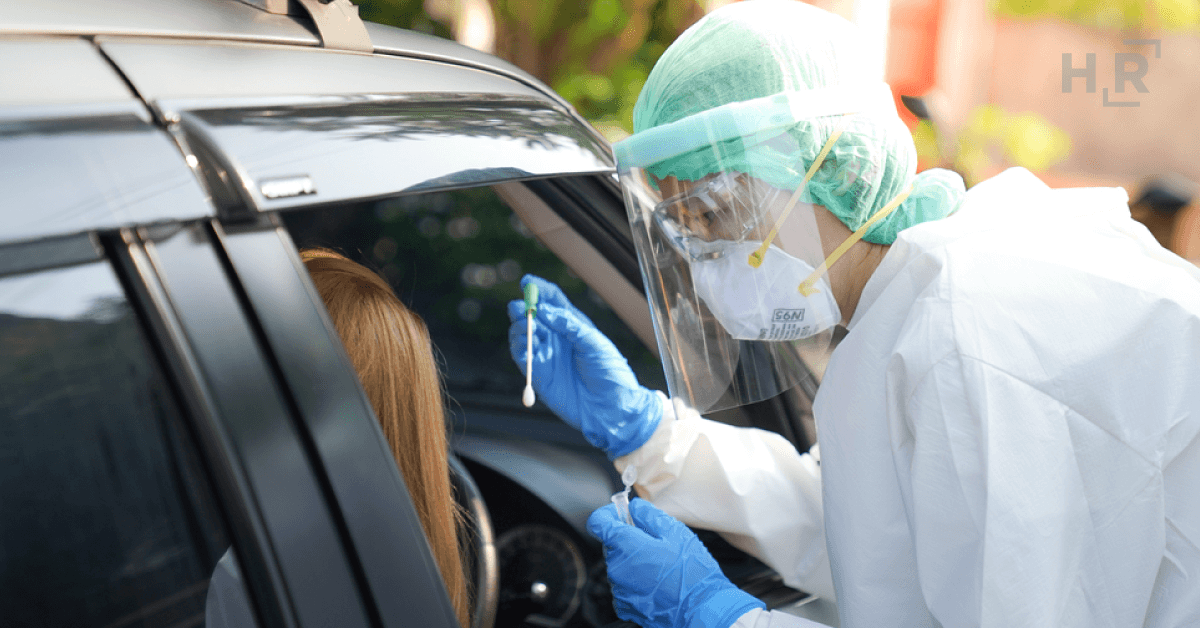Is Your Company Ready for California’s New COVID-19 Protection Requirements?
Is your company ready for California’s New COVID-19 protection requirements? HireRight Chief Medical Officer, Dr. Todd Simo, explains the new Emergency COVID-19 Prevention Regulations in CA. Learn more on our blog.

California tends to be a trendsetter as it pertains to employment law, and in a recent vote, the California Occupational Safety and Health (Cal/OSHA) Board unanimously approved new “Emergency COVID-19 Prevention Regulations.” These will go into effect within a few days after approval by California’s Office of Administrative Law.
Major Requirements
This new regulation really raises the bar on employer requirements that must be put into place in order to permit employees to return to work. The major requirements imposed on employers include:
A written COVID-19 prevention program policy
A mandate to perform contact tracing that involved workplace exposure
Including notifying and testing potentially exposed employees
Requiring all environment protections
Wearing masks
Social distancing
Improved ventilation
Disinfecting worksites
As ordered, not allowing employees with COVID-19 to return to their jobsite until their quarantine ends
Further mandating most employers to pay these employees throughout quarantines
A reporting requirement to the public health department for all COVID-19 outbreaks
With an outbreak defined as three or more cases in two weeks
If an outbreak occurs, the employer must provide continuous testing to all employees on-site during the outbreak
The above list is not all-encompassing of every regulatory requirement, and there are some elements of the regulation that are very narrowly focused on certain employer types. However, the list clearly shows that California has codified the basic requirements needed to bring back workers to the jobsite safely, as well as imposes additional requirements such as mandated testing after a defined outbreak.
Top Take-Aways For Employers
When looking at the testing rule after an outbreak, here is what I gleaned:
Any employer whose jobsite meets the criteria of an outbreak must:
Provide testing immediately to all employees potentially exposed at that jobsite.
Further, this testing must be repeated on those same employees one week later.
Along with the testing requirement, the company must notify the local health department within 48 hours after knowledge of an outbreak.
After an outbreak, the employer must investigate the exposure and put a corrective action plan in place to mitigate an outbreak from happening again.
There is also a regulatory caveat, for lack of better words, in case of a significant outbreak, which is defined as an outbreak of 20 or more COVID-19 cases within a 30-day period
If this type of outbreak occurs at a job site, the employer must conduct twice a week testing of all potentially exposed employees.
The employer must continue this testing until the outbreak is concluded.
In both outbreak categories, an outbreak is considered over once there are no further cases after a 14-day period.
COVID-19 Testing
From a test requirement perspective, Cal/OSHA does not define what COVID-19 test is to be used. However, the EEOC clearly stated in its guidance from June 2020 that COVID-19 testing needs to be for markers of active viral presence, and there is currently no role for antibody testing for employment purposes. Therefore, employers in California who are mandated to test need to deploy a solution that detects actual viral presence. The two modalities to test an individual for active virus are either molecular testing (presence of viral genetic markers) or viral antigen testing (presence of virus structural elements).
There are certainly pros and cons to each testing modality, and California employers should start evaluating providers now for testing solutions just in case an outbreak occurs. When evaluating those potential providers, I recommend employers look for these major elements:
Specimen collection
Does the specimen collection require oversight by a medical professional?
Specimen type
What is the specimen required?
Is it easy to collect onsite?
Testing
How fast do I get the results?
For this type of testing program, the more rapid the result, the better the program works.
Result management
How do I get the results back to manage my program?
I wish I could say there is a one size fits all approach for COVID-19 testing. There is not. My recommendation is to discuss options with your local health department or clinics. You can also obtain such services from employment testing vendors like HireRight.
HireRight is committed to helping employers navigate the impact of the COVID-19 pandemic on their workforces by providing simple and powerful screening solutions for managing risk. We understand a one-size-fits-all approach will not work in today’s diverse working environment, so we are pleased to offer a variety of solutions – ad hoc testing, assurance testing and self-assessment tools. To learn more about COVID-19 Screening Solutions, click here.
Release Date: December 10, 2020

Dr. Todd Simo
Dr. Todd Simo currently serves as the Chief Medical Officer and Managing Director of Transportation at HireRight. He came to HireRight with a decade of experience in the medical consulting arena. Prior to HireRight, he was the Medical Director of an occupational health clinic in Virginia and owned a consulting firm providing medical director service to multiple companies located throughout the country. In that capacity, he established multiple customer specific health and drug screening services. In his current position, he oversees HireRight's medical department.